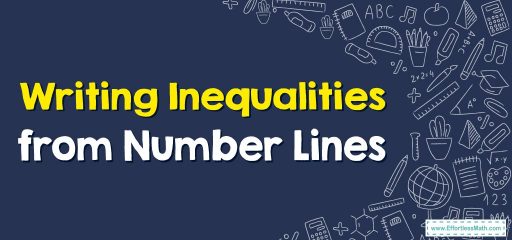How to Write Inequalities from Number Lines?

Step 1: Identify the endpoints of the number line:
Step 2: Write the inequality symbol:
Step 3: Determine the direction of the inequality:
Step 4: Combine the symbols:
Writing Inequalities from Number Lines – Examples 1
Solution:
Writing Inequalities from Number Lines – Examples 2
What inequality does this number line show?
Solution:
In this example, the endpoint is an open circle at \(3\), and the number line extends to the left. This means that the inequality is \(“x < 3″\).
Exercises for Writing Inequalities from Number Lines
What inequality does each number line show?
1.
2.
3.
- \(\color{blue}{x\le 15}\)
- \(\color{blue}{x>-7}\)
- \(\color{blue}{x\ge \frac{3}{5}}\)
Related to This Article
More math articles
- The Ultimate PERT Math Formula Cheat Sheet
- Top 10 Free Websites for TASC Math Preparation
- 6th Grade IAR Math Practice Test Questions
- Dividing Dollars: How to Navigate Money Division in Word Problems
- Grade 3 Math: Telling Time
- 4 Best Printers for Teachers in 2026
- 10 Most Common ACT Math Questions
- FREE 4th Grade SBAC Math Practice Test
- How Is the CBEST Test Scored?
- How to Solve Absolute Values and Opposites of Rational Numbers?




























What people say about "How to Write Inequalities from Number Lines? - Effortless Math: We Help Students Learn to LOVE Mathematics"?
No one replied yet.